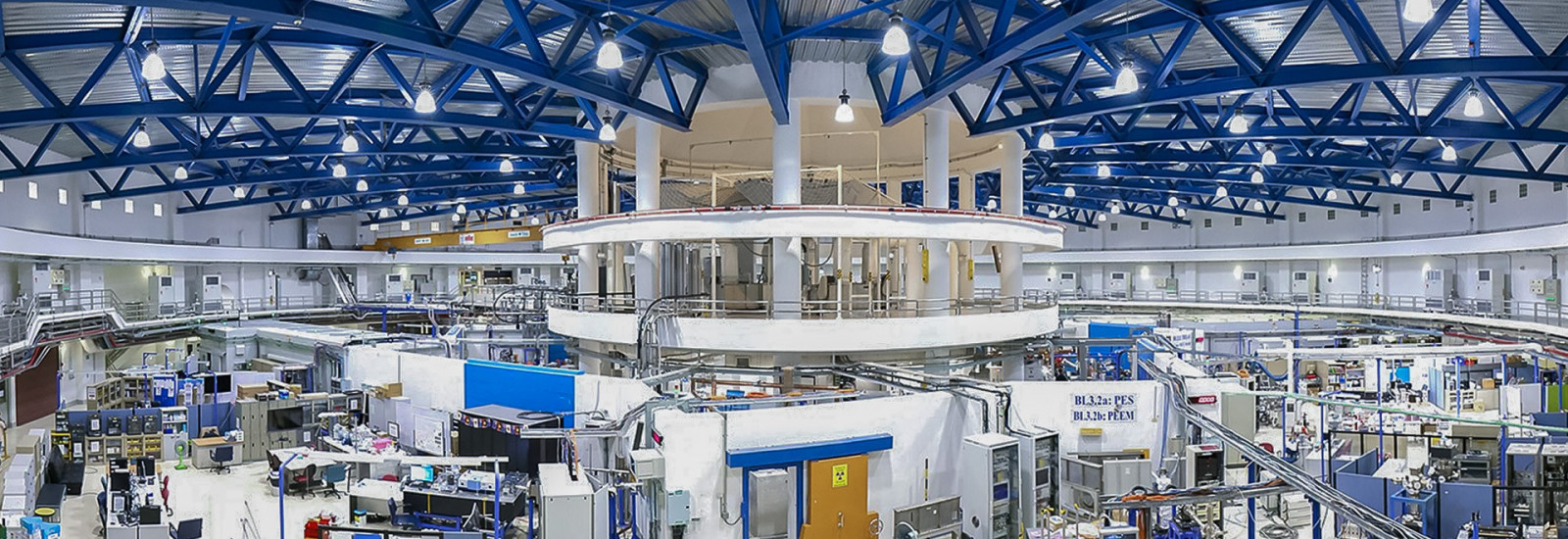Enlightening Thailand
Travelers from all over the world know Thailand for its beautiful views of light phenomena, such as stunning sunrises, turquoise ocean water, or the illumination of rivers and the skies during the Loy Krathong Festival of Lights. But did you know that the most brilliant light phenomena occur in the northeastern part of Thailand in Nakhon Ratchasima province? The SIAM Photon Source of the Synchrotron Light Research Institute (SLRI) provides synchrotron radiation to scientists and companies in the ASEAN region. It allows the investigation of intriguing new material properties. The 1.2 GeV storage ring with 81m circumference was donated to Thailand in 1996 by a Japanese consortium of semiconductor companies. Despite its high monetary value, the donation also asked for significant efforts from the Thai government to run the infrastructure, educate scientists and engineers, and upgrade and extend the infrastructure to the latest standards.
Huge milestones in the further development of the SPS have been the implementation of insertion devices and additional beamlines. First- and second-generation synchrotrons, such as the initial SPS, rely on the electrons being held on a purely circular track within an ultra-high vacuum tube. The vacuum needs to be below 10-9 mbar to allow for an unhindered motion of electrons for up to 12h without interference with residual gas molecules. The curved electron motion at almost the speed of light causes the emission of synchrotron radiation. To increase the intensity, third-generation synchrotron implement so-called insertion devices. These consist of a straight section of magnets that makes the electrons move in a slalom motion. So instead of one wide curve, the electrons now go through many sharp turns making them emit more brilliant synchrotron radiation.
“Think of the synchrotron light intensity being the tire wear of a race car. In a wide curve of a NASCAR racetrack, there is some abrasion. However, if you ride at the same speed through a narrow slalom course, your tires will melt down burning a lot of rubber. Similarly, the synchrotron radiation is a lot higher during the slalom motion of the electrons,” explains Thanapong Phimsen from the SLRI. A key challenge is to implement the new slalom course into the complex vacuum system without the electrons crashing into the walls of the tube.
VAT’s customized vacuum solutions for every requirement
Achieving the ultra-high vacuum requirements of synchrotrons is a challenge, but VAT has an extensive product portfolio for ultra-high vacuum applications. “We do have the perfect valve for each position in the synchrotron vacuum system”, explains Kenneth Kuah, Sales Manager at VAT. “For example, at some points further away from the electron beam, we installed standard series 26.4 high vacuum angle valves with a low outgassing rate and an extended maintenance cycle. Closer to the beam, or near the insertion devices, the radiation intensity can be quite high. In this regime, only all-metal valves, such as the series 57.1 angle valve, should be used because they have no elastomer sealing that can degrade within a high-radiation environment.” For this purpose, VAT has developed a unique VATRING sealing technology, making it the only all-metal angle valve allowing repeated opening and closing without limiting its sealing capabilities.”
More complex is the sector valve dividing the ring into different vacuum segments. When one zone needs to be vented for maintenance, the others can remain under an ultra-high vacuum. That avoids potential contamination by ambient air, makes maintenance works easier and reduces the pump-down time afterward. However, each sector valve used is a disruption of the magnetic field that keeps the electrons in orbit, causing scattering of the electron beam. “It is always tricky to change the initial concept of the electron path in a synchrotron, e.g., when implementing a new insertion device or beamlines,” explains Supan Boonsuya. For this reason, the vacuum engineers from the SLRI worked closely with VAT engineers in Switzerland to define how the insertion devices change the electrical and RF properties of the ring. Then, an adapted version of VAT’s series 47.1 sector valves with a customer-specific RF bridge was delivered to the SPS and successfully tested. In total, 10 different VAT valve types have been implemented into the SPS synchrotron facility.
A strong partnership has been established
Some years ago, the first insertion devices have been successfully implemented into the SPS with the help of VAT vacuum valve technology. Twelve beamlines are in operation by now, and two more are currently under construction. In Thailand, a whole scientific community around the synchrotron facility has emerged. That has led to the planning of an even larger new 3 GeV synchrotron facility (SPS-II). This ambition underlines the importance of the SPS to the Thai research infrastructure. Of course, VAT will remain a supporting partner in finding the best solutions for the upcoming synchrotron beamlines and experimental stations.
